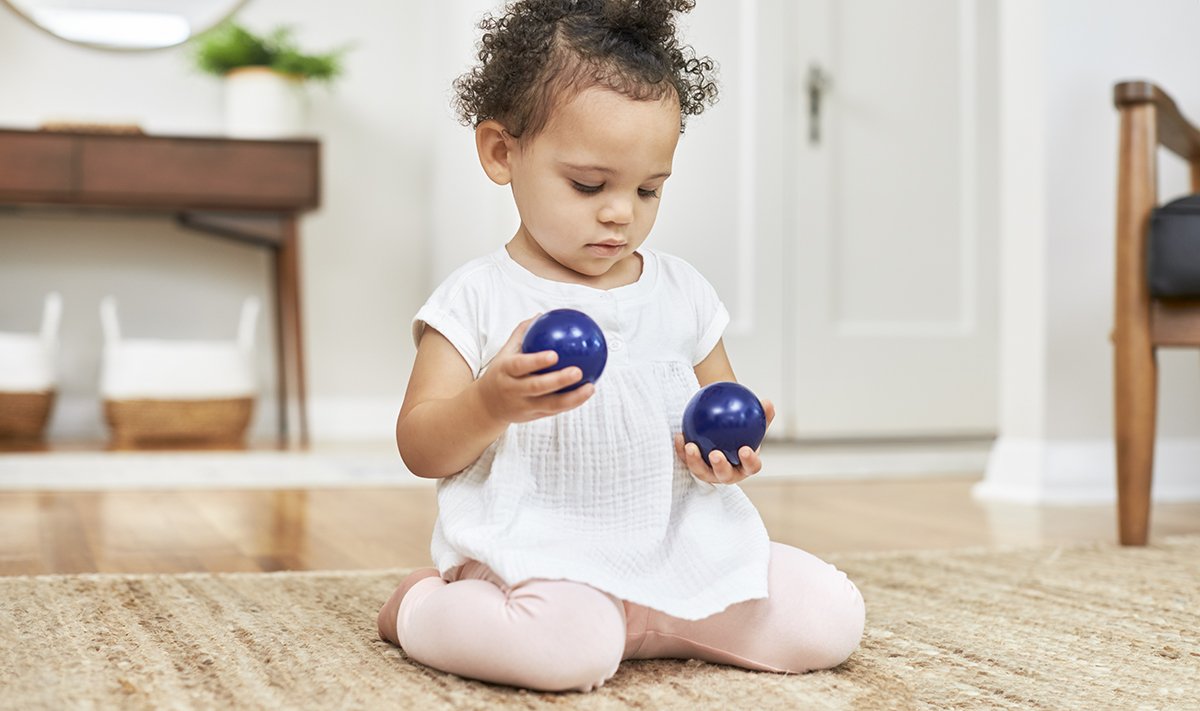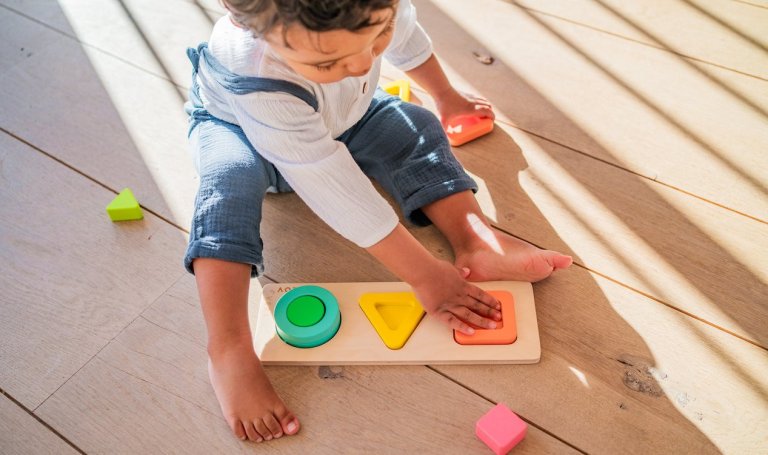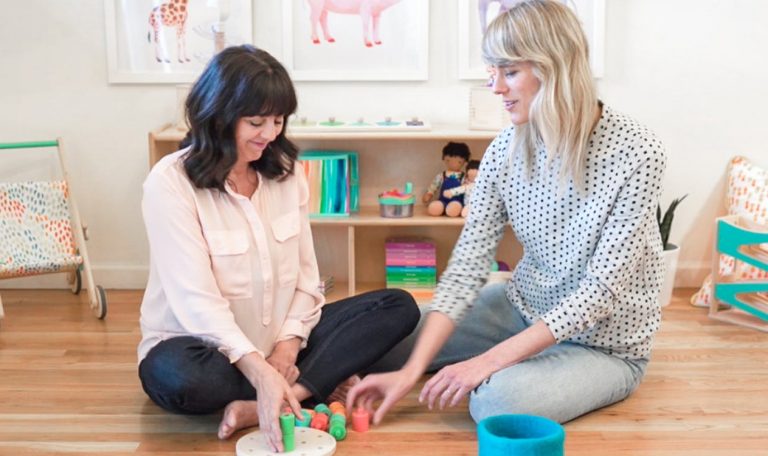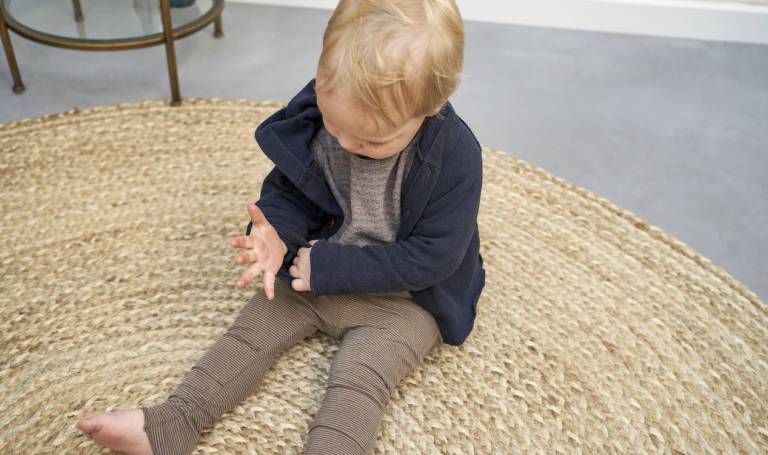Month 18: 4 concepts your toddler’s brain is ready for now

Heavy and light, loud and quiet, long and short, big and small—developing brains love to grapple with opposites. The sharp contrast between pairs of polar opposites is just right for your toddler’s natural interest in sorting and categorizing.
The more you can get your toddler physically involved in these activities, the more engaged they will be.
Below are some fun ways to explore opposites with your toddler:
Heavy and Light
A relative concept like heavy and light takes time and exposure for your child to understand. Repeat the lesson and note examples from everyday life together.
Finding everyday objects that vary only by weight can be a challenge. The Opposites Balls from our Thinker Play Kit are a great start, and there are other contrasting objects from the world around you:
You could find a rock that is almost too big and heavy for your toddler to pick up and a light pebble, or fill one water bottle, leave another one empty, and let them feel the difference in weight. A cotton ball, leaf, or feather can be examples of lightness; rocks or paperweights can be examples of heaviness. Gather a few examples and have your child hold the heavy and light things.
Loud and quiet
You can demonstrate the difference between loud and quiet for your toddler by saying, “I’m speaking in a loud voice!” and then whispering “now I’m speaking in a quiet voice.” You can also play music softly, then loudly, or turn a fan from low to high and talk about the difference in sound. Be careful about how loud the volume gets for little ears.
Want a clever way to grab a moment of peace when your toddler is screaming and shouting? You can say to them “shh, what can we hear if we’re quiet?” And then talk about the sounds you can hear now—a dog barking, a car outside, the dishwasher running, etc 😉
Long and short
You can introduce this concept by cutting two pieces of string into different lengths. The shortest should be small enough to not quite go around your child’s wrist, and the longest could go all the way around their waist. Take the short piece and put it on your child’s wrist, saying “this is a short piece of string. See, it’s not long enough to go all the way around your wrist” (trace your finger around their wrist). “Look, the long string goes around your wrist, and it’s so long it even goes around your waist.”
You can also use the different lengths of string to compare your toddler’s ankle to yours, or let your toddler put the string around your forehead.
Big and small
Toddlers love to explore the contrast between big and small. Nesting baskets, cups and containers, balls of different sizes, and the Circle of Friends Puzzle all teach the concept of size. When playing with these items, narrate what your toddler is doing and noticing. Even if they know where to put the circle pieces in the puzzle, show them hand-over-hand so they can put words with their understanding: “see, that big circle doesn’t fit in the little circle,” or “the big ball doesn’t fit in the little container.”
You can compare a small spoon with a big serving spoon, a small nesting bowl with a big one, or a clementine and an orange. Look for big and little rocks on a nature walk, or large and small leaves.
This post is also available in:
![]() Deutsch
Deutsch ![]() Nederlands
Nederlands
Posted in: 16 - 18 Months, Real World Play, Sorting, Child Development
Keep reading


16 - 18 Months
Month 17: Puzzling over puzzles—what the progression looks like
Puzzles build fine motor skills, hand-eye coordination, and problem-solving strategies. Here is the progression of puzzle solving for babies and toddlers.


16 - 18 Months
Month 18: Introducing the Wooden Stacking Peg Board—the Montessori way
Watch Lovevery CEO Jessica Rolph and Montessori expert Jody Malterre as they show some of the many ways your toddler can use the Wooden Stacking Pegboard.

16 - 18 Months
Month 16: Rethinking milestones—when to relax and when to talk to your doctor
Here are some thoughts to consider if you find yourself battling worries over your toddler’s milestones or suffering the effects of child comparisons.
